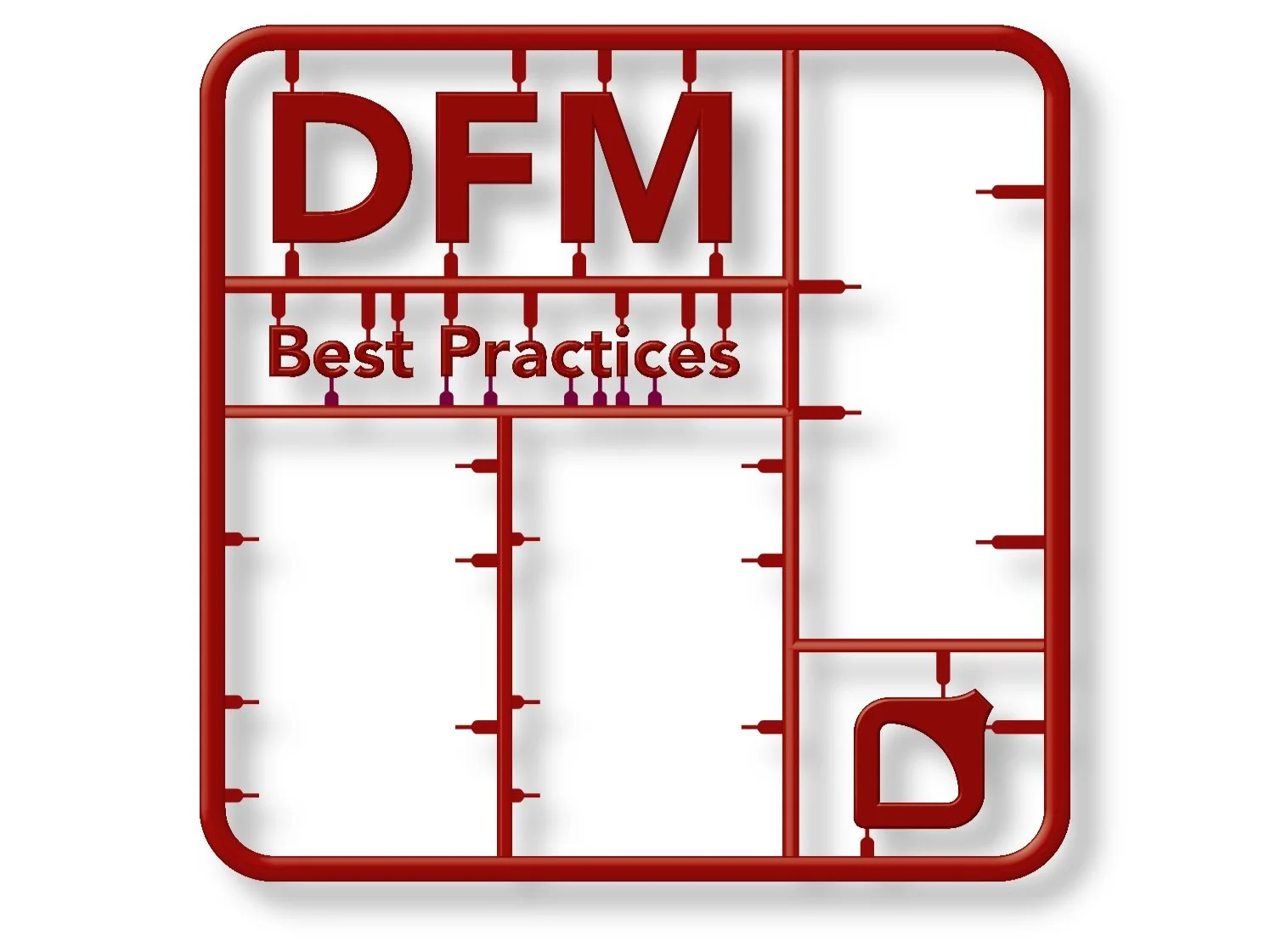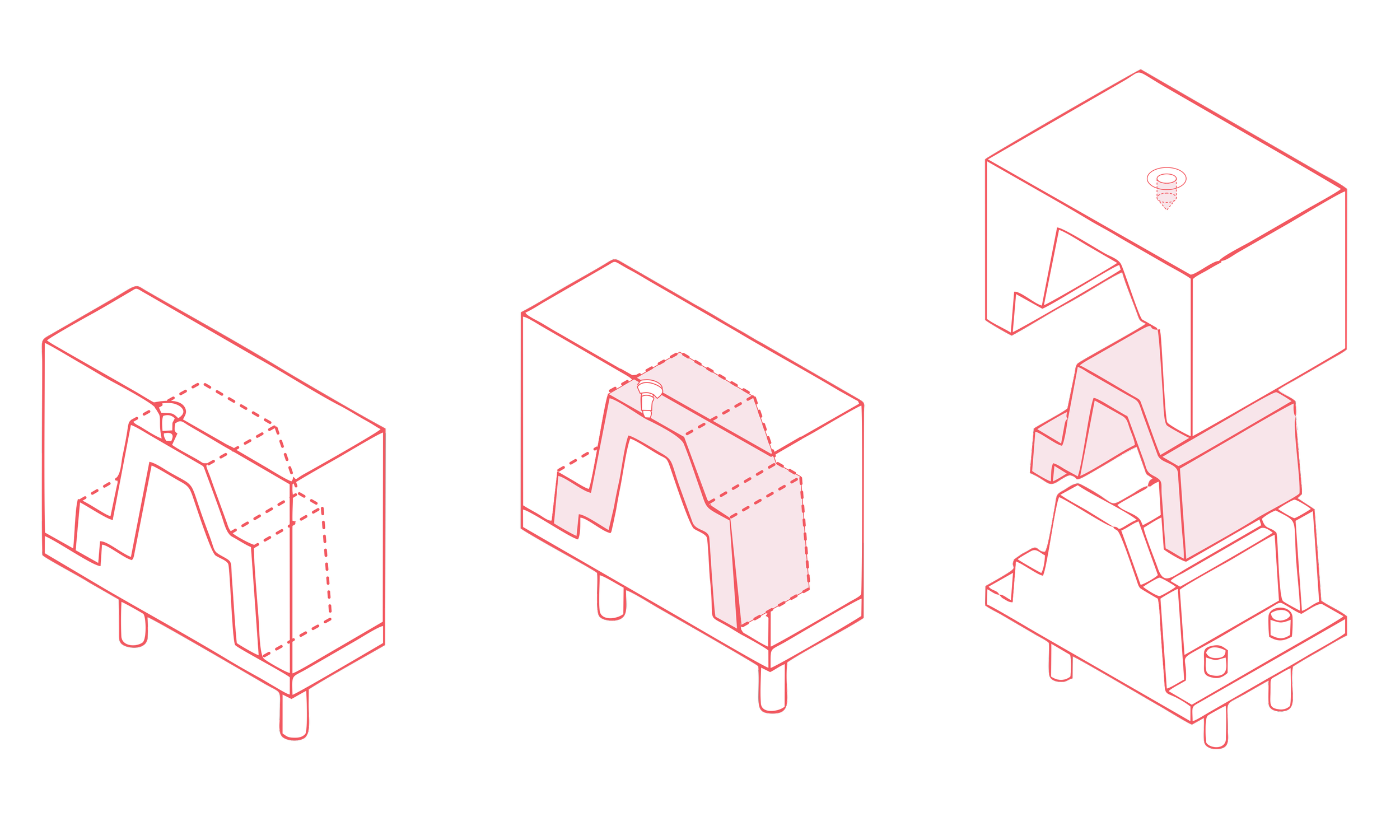Get the Most Out of Injection Molding: DFM Best Practices
Injection molding remains one of the most effective manufacturing processes for creating high-quality plastic components. Its ability to produce complex shapes at high volumes makes it ideal for industries like automotive, consumer electronics, and medical devices. By integrating advanced techniques and best practices, product design companies can optimize both functionality and production efficiency. This article explores how injection molding techniques can enhance product design, with specific examples and the latest advancements shaping the industry.
The Core Benefits of Injection Molding in Product Design
Design Flexibility: Injection molding allows for the production of intricate parts with complex geometries. A prime example is the creation of multi-component parts in automotive manufacturing, where precise tolerances are required. Consider a car’s dashboard, which is molded in one piece but features intricate details such as vents, housing for electronic components, and ergonomic contours. Injection molding allows designers to combine these elements into a single, cohesive unit.
Material Versatility: The ability to use various thermoplastics enables designers to select materials tailored to a product’s requirements. For instance, medical devices often rely on specialized materials like polycarbonate or polypropylene, which provide chemical resistance and sterilization compatibility. In contrast, high-impact ABS plastic might be used for consumer electronics casings, where both strength and aesthetics are key. Each material brings unique benefits, helping designers to optimize performance and durability for specific applications.
Production Efficiency: Injection molding’s ability to produce large quantities of parts quickly is a game-changer for consumer products. For example, Lego bricks are produced using this method, with millions of perfectly identical bricks made each day. The process ensures tight tolerances so that every piece interlocks perfectly, regardless of when it was made. This level of precision and repeatability is vital for products requiring consistency at scale.
Reduced Waste: Injection molding minimizes material waste by using precise quantities of plastic, and excess material can often be recycled. Companies like Patagonia have leveraged this advantage in producing their recycled polyester outdoor gear. Injection molding their components from post-consumer plastics demonstrates how sustainability can be integrated into the process, reducing waste while maintaining product quality.
Cost: Injection molding can significantly reduce manufacturing costs, particularly in high-volume production. Once the mold is created, the cost per unit drops dramatically because the process allows for the rapid production of large quantities of parts with consistent quality. The ability to reuse the same mold for thousands or even millions of cycles spreads the initial mold cost over many units, making it cost-effective for mass production. Additional techniques can also be implemented during the injection molding process such as automation and overmolding to further reduce labor costs and cycle times.
Injection Molding Best Practices for Optimal Design
Design for Manufacturability (DFM) ensures that a design is optimized for its intended manufacturing process. In the case of injection molding, a good example can be found in electronics, where cases for smartphones are designed with uniform wall thickness to prevent warping.
The case for an iPhone, for example, uses these principles to ensure that the material flows evenly during production, reducing defects like sink marks while maintaining strength and durability. Below is a list of some of the best practices that should be considered when designing for injection molding.
Use of Draft Angles: Draft angles are essential for removing parts from molds smoothly without damage. A simple but effective example is plastic water bottles, where the slight taper in the bottle’s design allows for easy ejection from the mold. Without this taper, the bottle could stick to the mold, resulting in production delays or damaged parts.
A good rule of thumb is to use a 2-degree draft angle when designing parts. This number can be different, however, depending on the material and surface texture being used. It is always a good idea to engage with a Contact Manufacturer (CM) early in the design process to understand what their particular capabilities are.
Material Selection: The performance of the final product heavily depends on the chosen material. For example, in the automotive industry, manufacturers may use glass-filled nylon for engine covers due to its high strength, thermal resistance, and lightweight properties. The proper material selection ensures that the part can withstand the extreme conditions it will face, whether it’s high temperatures or mechanical stress.
Engaging with a product development company is a great way to understand which materials are best suited for the job. They provide engineering and design services to identify key performance requirements and then use those requirements to select materials.
Optimizing Gate Location and Part Lines: Gates and part lines are marks left behind by the injection molding process. The gate is the point where molten plastic enters the mold, and its placement impacts the quality of the part. For example, in the production of plastic housings for electronics, gates are positioned strategically to ensure smooth material flow, avoiding defects like weld lines. A well-placed gate in a television remote control housing ensures a consistent surface finish and avoids weak points, enhancing both the appearance and durability of the product.
The location of a gate and part line can also have a dramatic effect on the overall aesthetic of the product. If placed poorly, they can be perceived as blemishes on the overall finish or completely throw off the design's ergonomics. For example, if a part line carelessly runs across a handle it can become irritating or even pinch the user's skin over time. Careful consideration needs to be made by the design team to ensure the part can not only be made but also accounts for the location of these injection molding markers.
Use of Simulation Software: Simulation software, like Moldflow, can predict potential defects in the design before production begins. For instance, in the case of producing a high-precision gear for a printer, mold flow analysis could reveal areas where the plastic might not fill evenly, leading to weak spots or inaccuracies in gear teeth. By simulating different gating strategies or material flows, the engineer can tweak the design to ensure optimal performance before any physical molds are created.
Incorporating Ribs and Bosses for Structural Integrity: Adding ribs to a thin plastic part can strengthen it without using more material. An example can be found in the design of laptop covers, where ribs are used on the interior surface to reinforce the structure while keeping the overall design lightweight and slim. This technique maintains the strength of the product while ensuring that the overall weight and cost are kept low.
For injection molding, a typical ratio to calculate the thickness of a rib is between 50% and 60% of the nominal wall thickness of the part, meaning the rib should be roughly half as thick as the main wall of the plastic part.
Advanced Injection Molding Techniques
Multi-material Injection Molding (Overmolding): Overmolding allows for the combination of two or more materials into a single part, enhancing both functionality and design. A common example is toothbrushes, which combine a rigid plastic handle with soft, rubberized grips for comfort. Overmolding improves the usability of the product without needing additional assembly steps.
In-mold labeling (IML): This technique places pre-printed labels inside the mold before injection, allowing the label to bond seamlessly with the molded part during production. This process offers several benefits, including enhanced durability, as the label becomes an integral part of the product, making it resistant to wear, moisture, and fading. IML also streamlines the production process by combining molding and labeling into a single step, reducing the need for post-production labeling and associated labor costs. Additionally, it provides a high-quality, aesthetically appealing finish with sharp, detailed graphics, ideal for consumer products like packaging and containers
3D Printed Tooling Integration: While drilling conventional metal has limitations, 3D-printed tools offer more flexibility allowing for creative solutions. For example, this technology can print spiral cooling/heating channels that wrap around former hard-to-reach or tall-and-deep geometries. By closely matching the shape of the part, Also known as conformal cooling, it eliminates hot spots, which can lead to warping, shrinkage, or other defects. This permits molders to control mold temperatures better, shorten cycle times from 25 to 75%, reducing energy consumption, and ultimately lowering production costs.
Micro-Injection Molding: This technique is essential for creating extremely small and precise components. In the medical industry, micro-injection molding is used to produce tiny parts for devices like hearing aids. These parts, which often feature microscopic dimensions and detailed features, must be produced with incredible precision to ensure their functionality and comfort for the user.
Automated Injection Molding Systems: Automation in injection molding has become more prevalent, especially in industries requiring high volumes and tight tolerances, like automotive manufacturing. For instance, Tesla uses automated injection molding systems to produce lightweight plastic components for its electric vehicles, ensuring that parts are consistent, reducing production times, and keeping costs down.
Sustainability in Injection Molding: Sustainable design is becoming increasingly integrated into the injection molding process. For example, Coca-Cola has committed to using recycled plastics for its bottles through injection molding techniques. This not only helps reduce environmental impact but also demonstrates how companies can innovate by incorporating eco-friendly materials without compromising on product quality.
Advanced Tool Design: Achieving complex geometries like undercuts in injection molding has become commonplace thanks to advancements in tool designs. One common approach is the use of side actions, which are movable mold components, such as slides or cores, that create the undercut during molding and then retract or slide away to allow the part to be ejected. Another technique is collapsible cores, which compress inward to release internal undercuts, often used for parts like threaded caps. Lifters are another tool, allowing angled sections to form undercuts and then move away during ejection.
Although often more costly, these techniques enable the creation of intricate designs, such as snap-fit features or complex internal structures, without sacrificing manufacturability or product integrity. Engaging with a product development firm can help balance the design benefits with the tooling cost so that you can make informed decisions. PD firms stay up to date on advancements in tool design and often push manufacturers to develop new techniques to achieve more desirable results.
Conclusion
Injection molding continues to evolve as a key process for optimizing product design. By adhering to best practices, leveraging advanced material selection, and incorporating the latest technology like 3D printing and simulation software, designers can create products that are both high-performance and cost-efficient.
As more advancements in injection molding emerge, it is important to align with an experienced team that puts DFM at the center of its product development process. Whether it's producing everyday items like toothbrushes or high-precision medical devices, Acorn understands how to leverage manufacturing techniques to create durable user-friendly designs. Fill out the form below to learn more about how our engineering and design services can benefit you.



